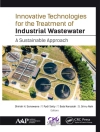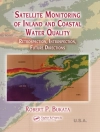This book highlights the role that both infrastructure and governance play in the context of resilience and adaptation to climate variability and change. Eleven case studies analyze in-depth impacts of extreme events in projects, basins and regions in the Arid Americas (Unites States and Mexico), Australia, Brazil, China, Egypt, France, Nepal, Mexico, Pakistan, Turkey and South Africa. Theydiscuss the importance of infrastructure (mainly reservoirs) in adaptation strategies, how planning and management aspects should improve in response to changing climatic, economic, social and environmental situations and what the management, institutional and financial challenges would be for their implementation. Governance aspects (policies, institutions and decision making) and technical and knowledge limitations are a substantial part of the analyses. The case studies argue that reservoirs are essential to build resilience contributing to adaptation to climate variability and change. However, that for them to be effective, they need to be planned and managed within a governance framework that considers long-term perspectives and multi-sector and multi-level actor needs and perspectives.
Spis treści
Introduction.- The Murray-Darling Basin: climate change, infrastructure and water.- Climate change adaptation, water infrastructure development, and responsive governance in the Himalayas: The case study of Nepal’s Koshi River basin.- Building Pakistan´s resilience to natural disasters in the Indus River Basin.- Yellow River: Re-operation of Infrastructure system to increase Resilience to Climate Variability and Changes.- Seyhan Dam, Turkey.- Contributions of Aswan High Dam in Alleviating the Impacts of Climate Fluctuations and Change.- Greater security with less water: Sterkfontein Dam’s contribution to systemic resilience.- The Durance-Verdon river basin in France: the role of infrastructures and governance for adaptation to climate change.- Enhancing governance of climate resilience in the Arid Americas: A multi-country comparative assessment of the role of reservoirs in adaptive management.- Mitigation measures for high-risk dams, considering changes in their climate and basinin Mexico.- Sobradinho Reservoir.
O autorze
Dr. Cecilia Tortajada is Senior Research Fellow, Institute of Water Policy, Lee Kuan Yew School of Public Policy, Singapore. The main focus of her work at present is on the future of the world´s water, especially in terms of water, food, energy and environmental securities through coordinated policies. She has been an advisor to major international institutions like FAO, UNDP, JICA, ADB, OECD, IDRC and GIZ, and has worked in countries in Africa, Asia, North and South America and Europe on water and natural resources and environment-related policies. She is member of the OECD Initiative in Water Governance.
She is a past President of the International Water Resources Association (2007-2009) and an honorary member of the IWRA. Editor-in-Chief of the
International Journal of Water Resources Development and Editor of book series on Water Resources Development and Management of Springer. She is also editor of Springer Briefs on Case Studies on Sustainable Development and on Water Science and Technology; and member of series Advisory Board of Springer Briefs in Earth Sciences, Geography & Earth System Sciences. She is the author and editor of more than 30 books by major international publishers. Her work has been translated into Arabic, Chinese, French, German, Japanese and Spanish languages.












